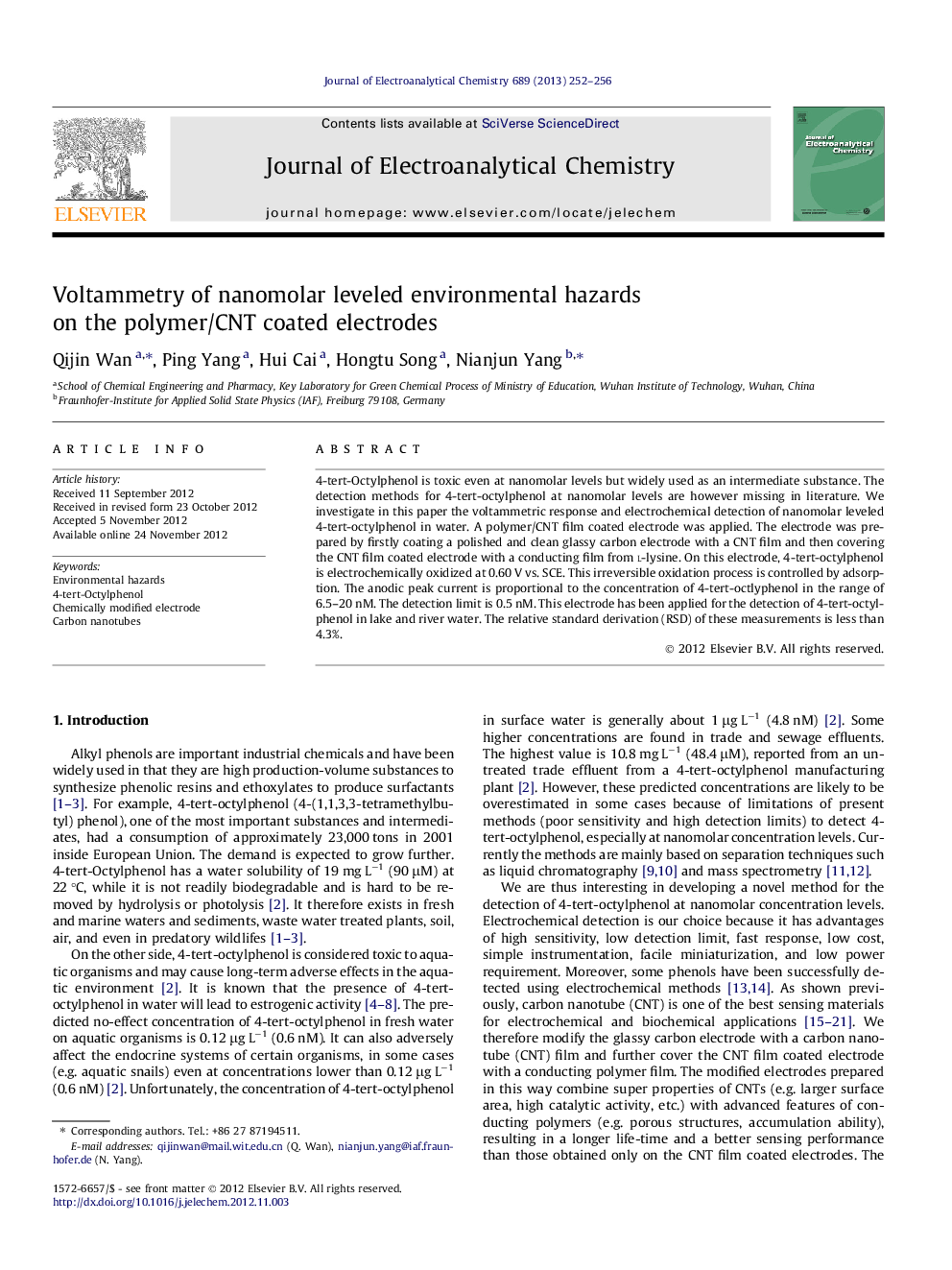| Article ID | Journal | Published Year | Pages | File Type |
|---|---|---|---|---|
| 219176 | Journal of Electroanalytical Chemistry | 2013 | 5 Pages |
4-tert-Octylphenol is toxic even at nanomolar levels but widely used as an intermediate substance. The detection methods for 4-tert-octylphenol at nanomolar levels are however missing in literature. We investigate in this paper the voltammetric response and electrochemical detection of nanomolar leveled 4-tert-octylphenol in water. A polymer/CNT film coated electrode was applied. The electrode was prepared by firstly coating a polished and clean glassy carbon electrode with a CNT film and then covering the CNT film coated electrode with a conducting film from l-lysine. On this electrode, 4-tert-octylphenol is electrochemically oxidized at 0.60 V vs. SCE. This irreversible oxidation process is controlled by adsorption. The anodic peak current is proportional to the concentration of 4-tert-octlyphenol in the range of 6.5–20 nM. The detection limit is 0.5 nM. This electrode has been applied for the detection of 4-tert-octylphenol in lake and river water. The relative standard derivation (RSD) of these measurements is less than 4.3%.
► Monitoring of nanomolar leveled environmental hazard, 4-tert-octylphenol. ► Direct oxidation of 4-tert-octylphenol on a polymer/CNT film coated electrode. ► Wide linear range and long life-time for the detection of 4-tert-octylphenol.
